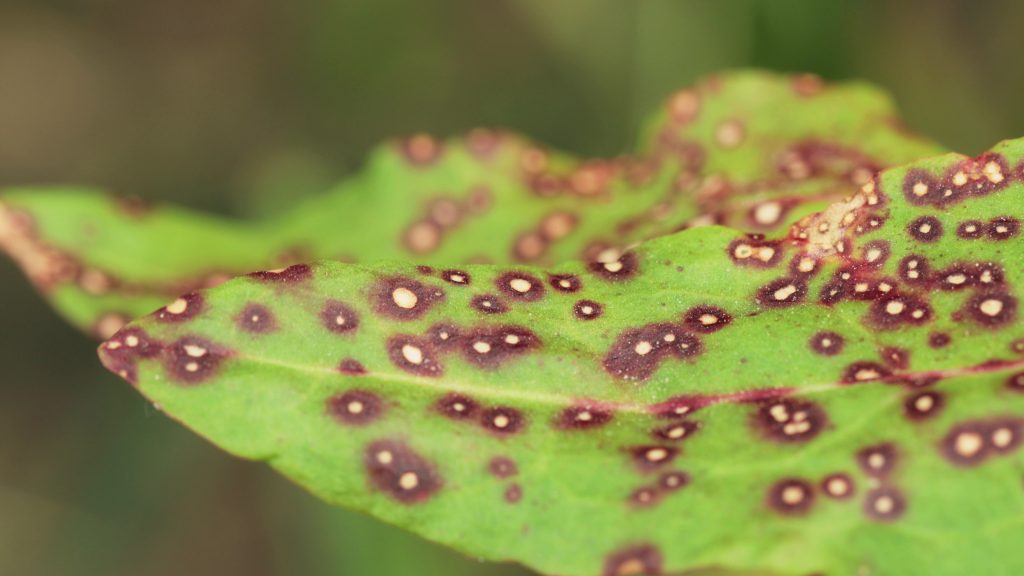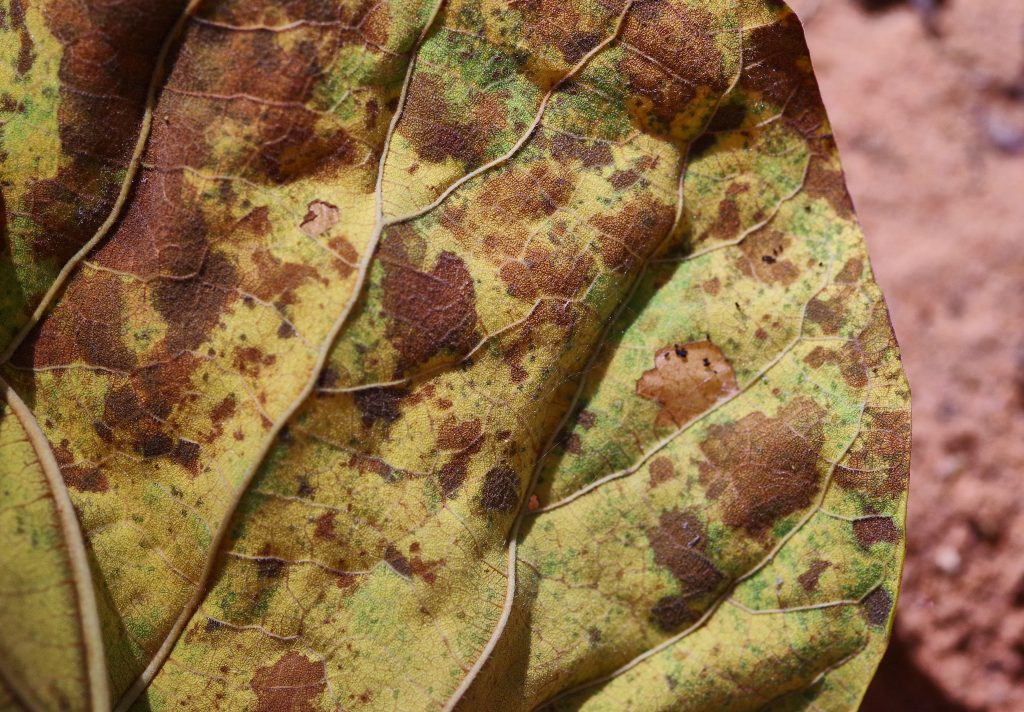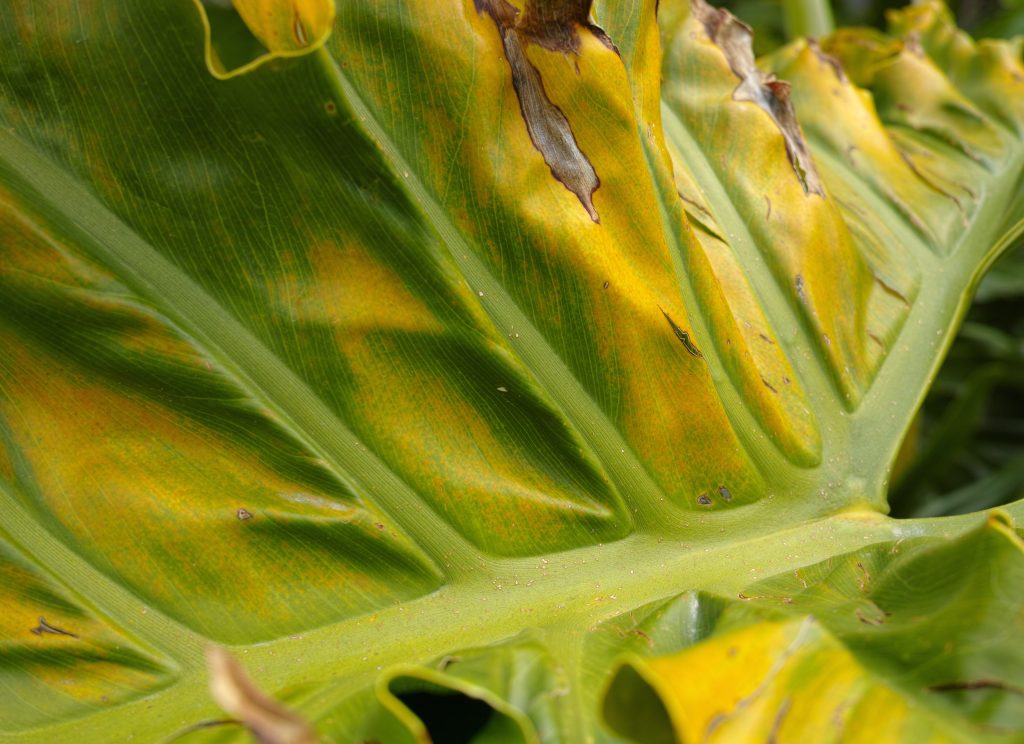Top Causes & Best Treatment of Brown Spots on Plant Leaves
If you ever notice brown spots on plant leaves, don’t panic. In most cases, these brown spots on leaf tips won’t kill your houseplants, but they do pose some minor damage to the affected areas and ruin the overall aesthetics. Attention though, these brown leaves are pretty much sentenced to death and will not turn green again. So, the first thing you can do is to remove the brown leaves.
Next, how to get rid of brown spots on plant leaves in the long run? In today’s post, we will uncover the causes behind the scenes, and guide you through the best treatment for brown spots. Let’s dive in!
Table of Contents
What Are the Brown Spots on Plant Leaves
Trees, shrubs, houseplants, and any other indoor greens, can showcase brown leaves with splotches. These brown spots on leaves are usually the result of various fungal infections known as leaf spot diseases, including Septoria, Venturia, Cedar-Apple Rust, and Anthracnose. Other times, brown spots, holes, and tips, are the marks that bacterial or viral infections leave on your plants.
In addition to the eye-catching brown spots, the scenes of leaf spot diseases can vary. When encountering the following situations, you are actually dealing with the same suspect, leaf spot diseases.
- Brown spots with yellow holes
- Black spots on pothos leaves
- Fiddle leaf fig brown spots
- Brown, crispy tips on plants
- Plant leaves turning brown
- Yellow spots on leaves
- White spots on plant leaves
When affected, the infection typically starts on lower or inner branches, with spots ranging in shape from circular to angular. Sometimes, you may notice the pathogen responsible for producing spores in the center of the brown spot.
What Causes Brown Spots on Plant Leaves
What is responsible for the brown leaves? The first thing that comes across your mind should be anything related to humidity, as fungi love humid and moist environments. Including that, here are the top 10 reasons behind the brown scenes.
High Temperature & Humidity Levels
In controlled environments, the grow tent temperature and humidity have a huge influence on the overall well-being of your plants. On one hand, extreme heat can cause the cells in plant leaves to swell and burst, a condition known as edema. Edema shows up as small brown scars or pits on the leaves. In more severe cases, heat stress causes large brown patches, or the entire leaf may dry out and die due to excessive water loss.
On the other hand, high humidity levels are natural cribs for fungal pathogens. When moisture in the air is excessive, it lingers on leaf surfaces, resulting in an above-average VPD. This dampness encourages the development of fungal diseases like powdery mildew, mold, and leaf spot, which can cause brown, black, or gray patches on leaves.
Extreme Cold Temperatures
When plants are exposed to cold weather or a sudden temperature drop such as frost, the water inside their leaves can freeze, causing the cells to rupture. This damage often appears as brown, wet, or slimy spots that do not heal, even when the plant is moved to a warmer environment.
Overcrowded Plants
When plants are grown too closely together, a condition often happens when you grow too many plants in one container, there’s less space for airflow, which allows moisture to build up. Fungal spores, which thrive in damp conditions, can easily move from one plant to another, especially through infected leaves or soil, resulting in brown leaf spots.
Overwatering or Underwatering Plants
When plants are overwatered, their roots can become waterlogged, leading to oxygen deprivation. Without sufficient oxygen, the roots cannot function properly, and the plant is unable to take up nutrients and water efficiently. This results in stress, often showing up as yellowing leaves, wilting, and the development of brown or black spots, particularly on the lower leaves.
On the contrary, underwatered plants lose something called turgor pressure, which helps keep their cells firm and healthy. In drought conditions, the parts of the plant furthest from the roots—like the leaf edges—are the first to dry out, leading to brown, crispy spots.
Sunburn
Plant leaves can get burnt or scorched when exposed to intense direct sunlight right in the afternoon or placed under powerful grow lights. Initially, light damage might appear as grey or pale areas, but it can quickly progress to browning and crisping up of the entire leaf.
Fertilizer Burn
Adding too much fertilizer can overwhelm plants, as fertilizers often contain salts that can accumulate in the soil. These salts can pull water out of the plant’s tissues, causing the leaf edges to burn and turn brown. This condition, known as nutrient burn, is more harmful than a lack of fertilizer.
Pests
Indoor pests such as the notorious aphids, spider mites, or thrips can cause significant damage to plant leaves. When invaded by these pests, your plants can first present some small holes, followed by yellowing or brown spots later. In severe cases, the pests can cause widespread damage, resulting in deformed leaves, stunted growth, and even plant death if not treated promptly.
Hard Tap Water
We understand many of you use tap water from the kitchen or the yard to feed your plants. The thing is tap water, or hard water, often contains high levels of dissolved minerals like calcium and magnesium. Over time, these minerals can build up in the soil and affect the plant’s ability to absorb nutrients, which can further cause leaf browning.
Garden Waste Piles
This may never occur to you, but fungal spores can survive on dead plant matter left over the winter and re-emerge in the spring. When garden debris is not properly cleared, these fungi can continue to infect new plants, leading to brown spots on leaves as the infection spreads. So, dispose of your garden rubbish as soon as possible!
How to Get Rid of Brown Spots on Plant Leaves
First thing first, grab a clean and neat scissor to trim off the affected brown leaves. Then we can talk about the solutions to stop the leaf spot disease from further spreading.
Keeping Optimal Temp & Humidity
Different houseplants have their preference for the optimal temperature and humidity in the grow tent. As a general rule of thumb, here’s a chart for the suggested grow room temp and humidity levels based on plant growth stages.
How to regulate the temperature and humidity in grow tents? At Mars Hydro, we have a set of ventilation gear to help you out!
Inline Fan: Mars Hydro offers 3 series of inline fans for controlling airflow in your grow tent, catering to both beginners and experienced growers. By actively exchanging the air inside the tent with fresh air from outside, the inline fan reduces moisture on plant surfaces, discouraging fungal growth.
Mars Hydro iFresh 4″ (100mm) Smart Inline Duct Fan
Mars Hydro iFresh 6″ (150mm) Smart Inline Duct Fan
Mars Hydro 4″ (100mm) Inline Duct Fan And Refillable Carbon Filter Combo With Speed Controller
- Fan/Duct/Filter Size: 4 Inch
- Airflow: 205CFM
- Noise: 26.8dB-A
- Controller Type: Speed Controller
- Filter: Refillable carbon filter
Mars Hydro 6″ (150mm) Inline Fan And Refillable Carbon Filter Combo With Speed Controller
- Fan/Duct/Filter Size: 6 Inch
- Airflow: 402CFM
- Noise: 32dB-A
- Controller Type: Speed Controller
- Filter: Refillable carbon filter
Clip-on Fan: If you prefer compact ventilation tools, a clip-on fan easily clips onto frames within your grow tent, providing targeted airflow to your plants. Plus, its adjustable head and multiple speed settings allow you to customize airflow according to your plant’s needs.
What’s more, the Mars Hydro 5L plant humidifier allows you to add moisture to the air when needed, especially during dry seasons or when running heat-generating equipment like grow lights.
Separating Plants
Space plants appropriately to allow for sufficient airflow between them. If you’re growing multiple plants in one container, repot them into separate pots. Prune overcrowded plants to improve airflow and reduce the chances of fungal spores spreading between leaves.
Watering Plants Properly
Ensure that your plants have well-draining soil and do not sit in standing water. Water only when the top inch of soil feels dry to the touch. Reduce watering frequency during colder months when plants are not actively growing. Increase watering frequency during hot, dry periods to maintain proper turgor pressure in the leaves.
Adjusting the Lighting
Plants that are sensitive to direct sunlight should be moved to a spot with filtered light or provided shade during the hottest part of the day. If using grow lights, adjust the grow light distance from the plants to prevent light burn. Ensure each plant is receiving the appropriate amount of light based on its specific needs.
Using Fertilizer Wisely
Use the correct type and amount of fertilizer for your plants. Always follow the manufacturer’s instructions for application, and avoid over-fertilizing. Additionally, it’s important to test the soil of a tree with leaf spots before applying fertilizer. If you suspect fertilizer burn, flush the soil with water to dilute the excess salts, and temporarily reduce fertilization.
Tackling Pests
Inspect your plants regularly for signs of pests like aphids, spider mites, or thrips. If you notice any, isolate the affected plants and use insecticidal soap, neem oil, or other organic pest control methods to eliminate the pests. Fungicides serve as preventative measures that should be applied before any visible symptoms develop on the leaves. They are generally not needed unless the tree has experienced leaf loss for multiple years.
Protecting Plants during Frost
When frost approaches, move outdoor plants indoors or cover them with frost cloths or blankets when cold weather is expected. Ensure they are not placed near cold drafts or windows. Gradually acclimatize plants to temperature changes to prevent shock.
Removing Garden Waste
Regularly clean up dead plant material and garden debris to prevent fungal spores from surviving through the winter. Dispose of plant waste in a compost pile far from your growing area or dispose of it entirely to prevent reinfection in the spring.
Fixed: Brown Spots on Plant Leaves
Brown spots on plant leaves are a common issue, but they can often be resolved with proper care and attention. By understanding the various causes, you can take the right steps to prevent and treat these brown spots. From adjusting watering habits and improving air circulation with tools like Mars Hydro’s ventilation gear, to properly spacing plants and protecting them from extreme temperatures, these measures will help maintain healthy, vibrant plants.









